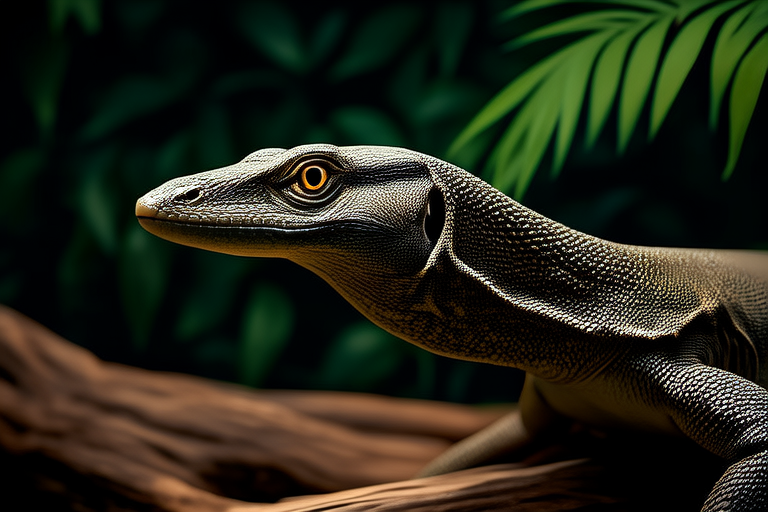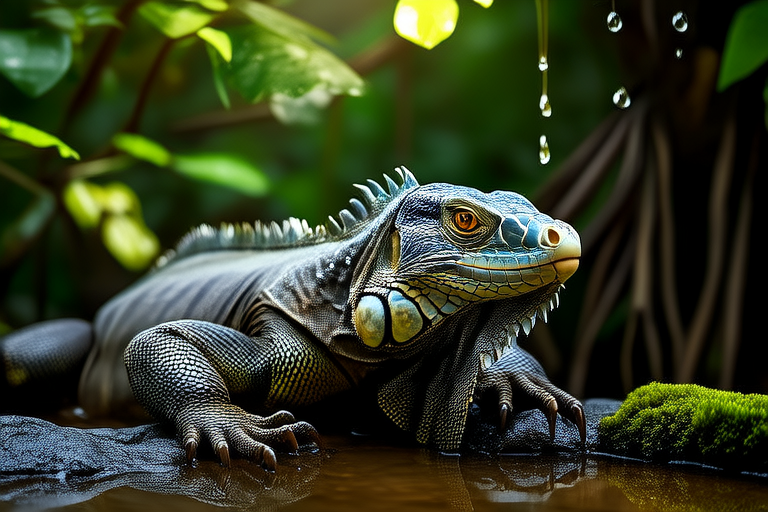From Jungle to Home: The Ultimate Guide to Living with a Water Monitor
Introduction to Water Monitors
Water monitors (Varanus salvator) are some of the largest lizards in the world, known for their impressive size and aquatic capabilities. Native to Southeast Asia, they can be found in various environments ranging from dense jungles to coastal mangroves. These reptiles are highly adaptable and are often seen swimming in rivers or basking on riverbanks. Their strong limbs, sharp claws, and powerful tails make them excellent swimmers and climbers. As pets, water monitors are popular among reptile enthusiasts due to their unique appearance and intriguing behaviors.
Natural Habitat and Behavior
In the wild, water monitors inhabit areas rich in vegetation and water sources. They are diurnal animals, meaning they are most active during the day. Their diet consists of a variety of prey, including fish, small mammals, birds, insects, and even carrion. Water monitors are territorial and may display aggressive behavior towards other monitors, especially when food is involved. They are also known for their intelligence, often exhibiting problem-solving skills and the ability to recognize individual handlers.
Responsibilities of Owning a Water Monitor
Legal Considerations
Prior to bringing a water monitor into your home, it’s crucial to check local laws and regulations regarding exotic pets. Some regions have strict restrictions or require permits for owning certain species. Additionally, be aware that water monitors can grow quite large, reaching lengths of over six feet, so ensure you have the appropriate space and facilities before making the commitment.
Care Responsibilities
Owning a water monitor comes with significant responsibilities. These lizards require specialized care, including proper housing, diet, and healthcare. Regular maintenance and attention are necessary to ensure their well-being. Owners must be prepared to provide a suitable environment that mimics their natural habitat as closely as possible.
Detailed Care Instructions
Housing
The enclosure for a water monitor should be spacious, providing ample room for swimming, climbing, and basking. A minimum size of 6 feet by 4 feet by 4 feet is recommended for an adult monitor. Use a secure top to prevent escapes, as water monitors are excellent climbers and swimmers. The enclosure should include a large water area for swimming, with clean, dechlorinated water. Additionally, provide branches or platforms for basking and climbing. Maintain a temperature gradient within the enclosure, with a basking spot around 95°F and cooler areas between 75°F and 85°F. Humidity levels should be kept at approximately 60% to 80%.
Diet
Water monitors are carnivorous and require a varied diet to thrive. Their meals should consist of live or pre-killed rodents, fish, insects, and occasionally eggs or other reptiles. Younger monitors should be fed more frequently, typically every other day, while adults can be fed less often, about once or twice a week. Ensure that the prey items are appropriately sized for the monitor to avoid choking hazards. Supplement the diet with calcium and vitamin D3 to support bone health.
Healthcare
Regular veterinary check-ups are essential for maintaining the health of your water monitor. Signs of illness may include lethargy, loss of appetite, abnormal feces, or changes in skin condition. Common health issues include respiratory infections, parasites, and metabolic bone disease. Proper hygiene practices, such as regular cleaning of the enclosure and handling, can help prevent many of these problems. Always consult a veterinarian experienced with reptiles if you notice any signs of illness.
Handling and Socializing Your Water Monitor
Water monitors are generally wary of humans and may exhibit defensive behavior, especially when young. However, with patience and consistency, they can become accustomed to handling. Begin by allowing the monitor to acclimate to its new environment for several weeks before attempting to handle it. Approach slowly and calmly, avoiding sudden movements. Use a towel to gently restrain the monitor if needed. Over time, regular handling can help build trust and reduce stress.
Tips for New Owners
Starting with a water monitor requires careful planning and preparation. Research thoroughly before acquiring a monitor to understand the specific needs and challenges of ownership. Choose a reputable breeder or rescue organization to obtain your pet. Be prepared for the long-term commitment, as water monitors can live for 10 to 20 years. Joining online forums or local groups can provide valuable support and information from experienced owners.
Resources for Further Learning
To deepen your knowledge about water monitors, consider reading books and articles on reptile care, joining online communities, and attending workshops or seminars. Local herpetological societies often offer resources and networking opportunities for reptile enthusiasts. Websites dedicated to reptile care can also provide useful information and advice.

